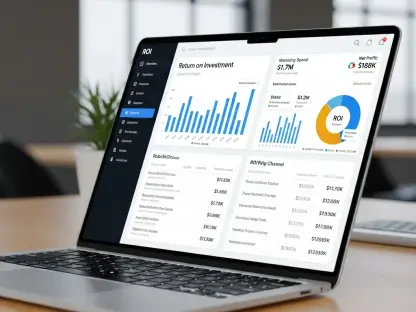The Allyl Methacrylate market is on a promising trajectory, projected to grow significantly from USD 1.35 billion in 2023 to an estimated USD 2.2 billion by 2032, marking a CAGR of 6.8% from 2024 to 2032. This robust growth is attributed to the increasing demand for allyl methacrylate in various industries, particularly adhesives, coatings, plastics, and dental materials. Allyl methacrylate’s unique properties, including its ability to enhance material durability and performance, make it a vital component in these applications. This surge in demand reflects the broader trend of seeking materials that offer improved performance and sustainability, aligning with global industrial growth and advancements.
Additionally, the development and adoption of bio-based methacrylates are driving market expansion, catering to growing environmental concerns. The drive for sustainability has led manufacturers to explore eco-friendly alternatives, positioning bio-based methacrylates as a viable solution within the market. Furthermore, innovations in lightweight materials and advanced coatings are propelling the utilization of allyl methacrylate. This material plays a crucial role in producing durable yet lightweight products, making it indispensable in industries focused on performance and efficiency. The global shift towards environmental consciousness and advanced material technology underscores the dynamic and evolving nature of the allyl methacrylate market.
Dominant and Emerging Regions
North America continues to dominate the allyl methacrylate market, primarily due to high demand in industrial applications and advanced research and development activities. The region’s strong industrial base, coupled with ongoing innovations, has facilitated the widespread incorporation of allyl methacrylate in various sectors. Companies in North America are heavily investing in new product developments, setting the stage for continued market leadership. This region remains a hub for technological advancements, with robust infrastructure supporting the growth of the allyl methacrylate market.
Conversely, Asia-Pacific is emerging as the fastest-growing region, driven by rapid industrialization and increased investments in the chemical sector. The region’s burgeoning economies are experiencing significant growth in manufacturing and infrastructure projects, spurring the need for high-performance materials. The rising adoption of advanced coatings and lightweight materials further fuels demand for allyl methacrylate, propelling market expansion. With a focus on enhancing material performance and sustainability, Asia-Pacific represents a dynamic landscape for allyl methacrylate applications, reflecting the region’s industrial growth and technological developments.
Key Players and Market Strategies
The allyl methacrylate market features prominent players such as BASF SE, Evonik Industries AG, LyondellBasell Industries, and Mitsubishi Gas Chemical Company, among others. These companies significantly contribute to market development through extensive research and development, strategic collaborations, and new product launches. By leveraging advanced technologies and innovative methodologies, these industry leaders are continuously enhancing the properties and applications of allyl methacrylate. Their commitment to driving industry standards and addressing market demands underscores their pivotal role in shaping the market landscape.
Strategic alliances and partnerships among key players are facilitating knowledge sharing and resource optimization, further accelerating market growth. These collaborations often result in the development of new, high-performance materials that meet the evolving needs of various industries. Additionally, ongoing investments in R&D are fostering the creation of innovative products with improved environmental profiles, aligning with the global trend towards sustainability. The collective efforts of these leading companies highlight their strategic importance in fostering technological advancements and driving market expansion.
Challenges and Market Opportunities
Despite the positive trends, the allyl methacrylate market faces several challenges, including raw material price volatility and environmental concerns associated with chemical production. Fluctuations in the prices of key raw materials can impact production costs and profit margins, presenting a significant challenge for manufacturers. Additionally, growing awareness of the environmental impact of chemical processes necessitates the development of sustainable production methods. Addressing these challenges requires a proactive approach, focusing on innovation and sustainable practices to ensure long-term market viability.
Competitive substitutes for allyl methacrylate also pose a threat to market growth, as alternative materials with similar properties continue to emerge. Nonetheless, the versatility and superior performance of allyl methacrylate provide significant opportunities for differentiation. By leveraging its unique attributes, manufacturers can develop high-value applications that meet specific industry requirements, reinforcing the material’s competitive edge. The ongoing development of eco-friendly alternatives and the advancement of manufacturing technologies present abundant opportunities for market players, positioning them to navigate challenges while capitalizing on emerging trends.
Future Prospects
The Allyl Methacrylate market is expected to witness significant growth, with projections indicating an increase from USD 1.35 billion in 2023 to approximately USD 2.2 billion by 2032, reflecting a CAGR of 6.8% from 2024 to 2032. This growth is driven by rising demand in various sectors, including adhesives, coatings, plastics, and dental materials. Allyl methacrylate is valued for its unique properties that enhance durability and performance, making it essential in these industries. This increasing demand mirrors a broader trend towards materials that offer better performance and sustainability, in line with global industrial advancements.
Moreover, the development and adoption of bio-based methacrylates are further propelling market growth, addressing environmental concerns. As sustainability becomes a priority, manufacturers are exploring eco-friendly options, positioning bio-based methacrylates as an attractive alternative. Innovations in lightweight materials and advanced coatings also boost the use of allyl methacrylate, essential for producing durable, lightweight products. This shift toward environmental awareness and cutting-edge material technology highlights the dynamic and evolving nature of the allyl methacrylate market.









